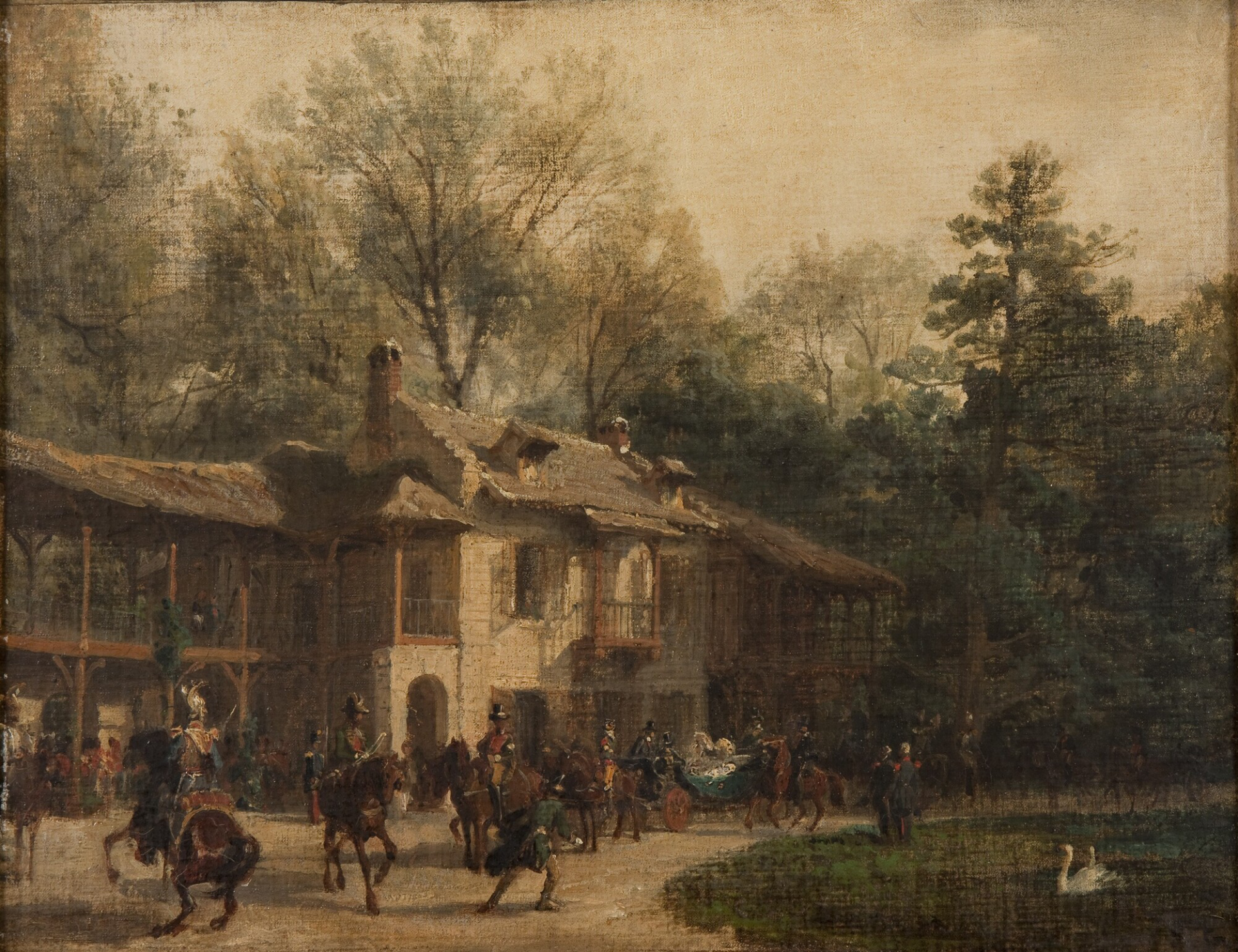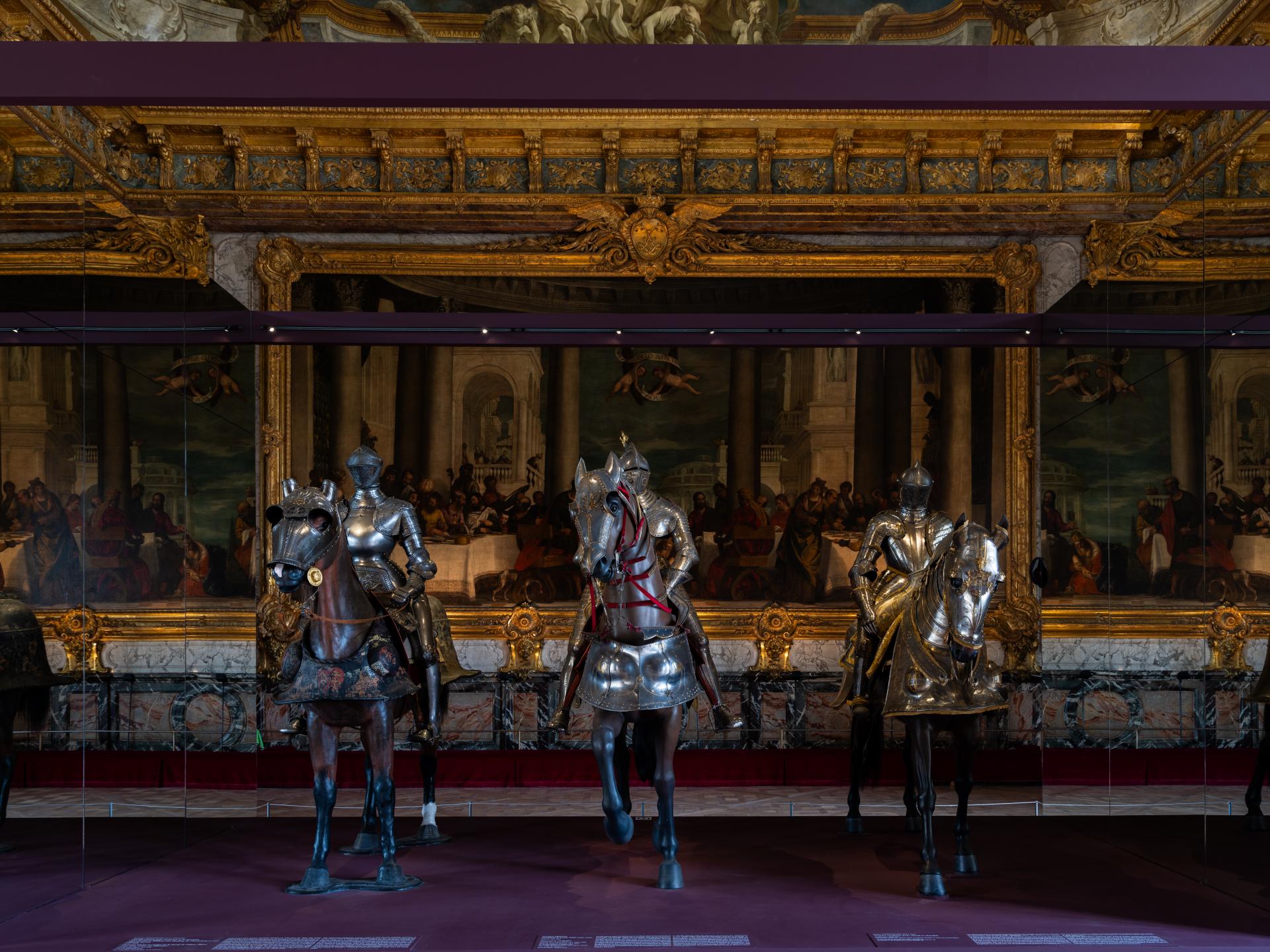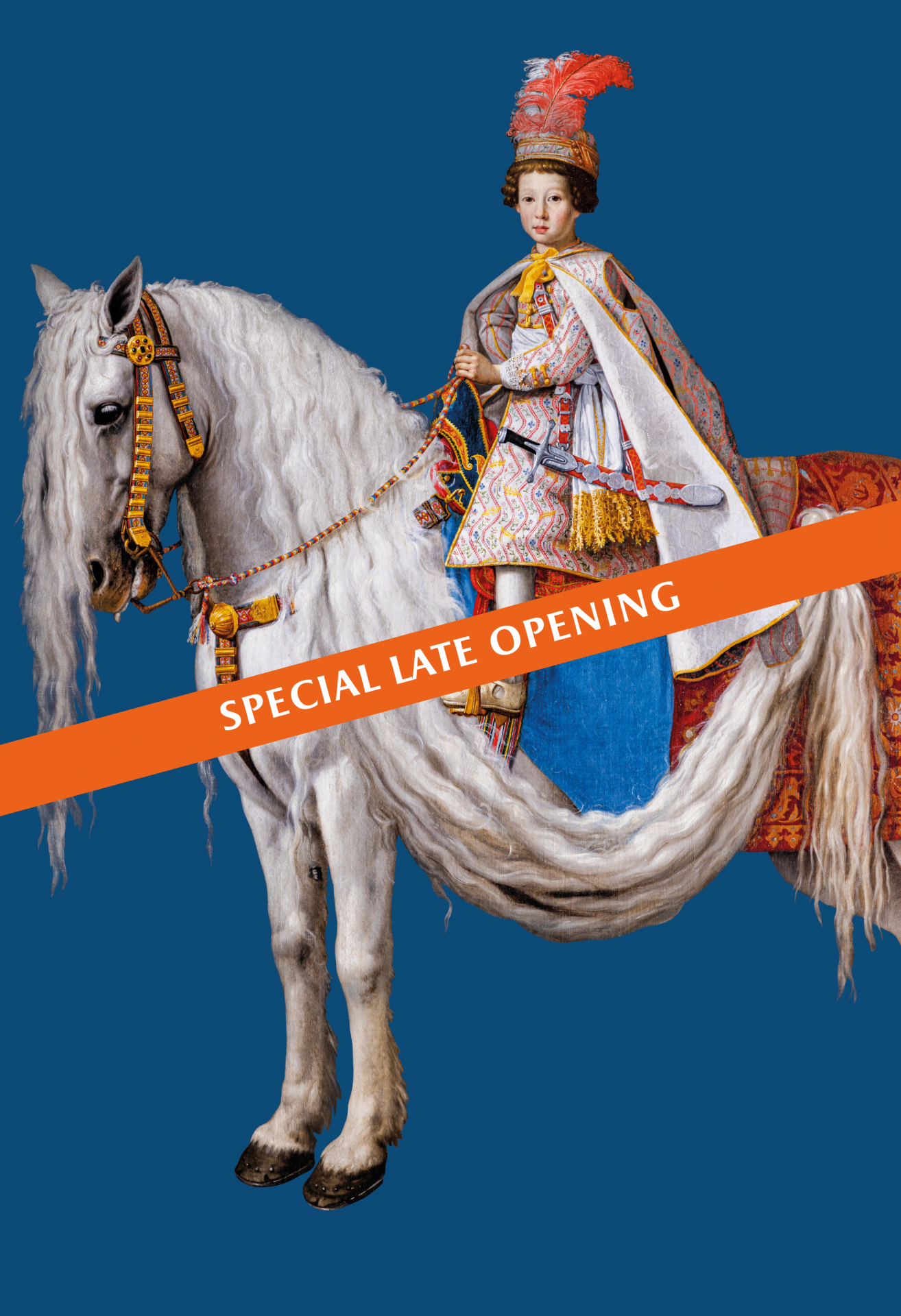To coincide with the equestrian events at the Paris 2024 Olympic Games, to be hosted on the Versailles estate, the Château is holding a major exhibition dedicated to horses and equestrian civilisation in Europe – the first exhibition on this theme to be presented on such a scale.

From 2 July to 3 November 2024 Horse in Majesty – At the Heart of a Civilisation
PRACTICAL INFORMATION
The exhibition will be held during the high season. Please check the access times for the Palace.
- Times: 9 a.m. to 6.30 p.m., Tuesday to Sunday. The last access is at 6 p.m.
- Book a “Palace” ticket or a “Passport” ticket to enter the exhibition (even if you have a free ticket).
Palace ticket
Until November 3, benefit from a reduced rate of €13 on the Palace Ticket, on presentation of a ticket giving access to the Musée du Domaine royal de Marly during the same period.
Plan your visitAccess and Opening times
The exhibition
From 2 July to 3 November 2024, the Palace of Versailles will be holding an exhibition entitled “Horse in Majesty – At the Heart of a Civilisation”. Nearly 300 works on exceptional loan from all over the world, highlighting the roles and uses of horses in civil and military society, from the sixteenth to the twentieth century, up to the eve of the First World War, which marked the end of horse-drawn civilisation and the relegation of horses to the realm of leisure.
This first exhibition dedicated to horses on such a scale will be divided into thirteen sections on a tour leading visitors through several emblematic areas of the Palace: the Africa Rooms, the King's State Apartment, the Hall of Mirrors, Madame Maintenon's Apartment and the Dauphine's Apartment on the ground floor.

Of horses and kings
In a gallery of princes' favourite horses, the exhibition presents Charles XI of Sweden's collection of horse portraits and more intimate portraits such as those of Queen Victoria's Arabian horses. But also the beauty and sheer scale of the aristocratic and royal stables built in the seventeenth and eighteenth centuries bear witness to the importance attached to horses in representations of power under the Ancien Régime.

Karl Girardet, Queen Victoria's Visit to the Queen's Hamlet at Petit Trianon, 21 August 1855
© Palace of Versailles, Dist. RMN / © Christophe Fouin
Festive horses and luxury
Equestrian festivals played a key role in the life of European courts. The exhibition presents some rare examples of these ephemeral festive arts.

Equestrian ceremonial armour - Hercules room
© EPV / Medhi Toumi
Horses and science
The exhibition also focuses on the relationship between art and science in anatomical studies of horses. The iconic early drawings by Andrea del Verrochio and Leonardo da Vinci are exhibited together here for the first time, in a collaboration between New York's Metropolitan Museum and the English Royal Collections.

Théodore Géricault (1791-1824), Head of a White Horse, circa 1800-1825, oil on canvas.
© Paris, Musée du Louvre
The Exhibition catalogue
The exhibition catalogue is available from the estate's shops and online shop.

This book explores the subject in all its multiple dimensions : political, diplomatic, academic, artistic, military, scientific, spectacular, real or mythical. It highlights the extraordinary richness of equestrian civilization in Europe, from the dawn of the Modern Age, when the place and uses of the horse in civil and military society underwent profound upheaval, to the eve of the First World War.
Cultural program
Late opening until 10:30 PM

On Tuesday October 15 2024, take part in exceptional late opening to discover the The Horse in Majesty at the Heart of a Civilisation exhibition.
opening hours
Time-stamped access in 30-minute slots starting at 5:30 p.m.
Last ticketing slot at 9pm
Last access at 9:30pm
Areas close at 10:30pm
Game book for children

In collaboration with the Palace of Versailles, Paris Mômes has designed a booklet-game for children aged 8 to 12, to help them discover the main themes dedicated to the horse and equestrian culture in Europe. Richly illustrated, the booklet is designed to be fun and instructive, with questions, riddles and games to help visitors actively understand the exhibition.
International meetings
On 25, 26 and 27 September 2024, the Palace of Versailles organised three days of international meetings on the theme of equestrian culture: Versailles and equestrian culture, past and present.
Echoing the ‘Horse in Majesty’ exhibition, the speakers discussed the role of the horse at the heart of civilisations, and in Versailles in particular.
You can watch all the lectures on our YouTube channel.
Curators :
Laurent Salomé, Director of the Musée National des Châteaux de Versailles et de Trianon
Hélène Delalex, Heritage Curator at the Musée National des Châteaux de Versailles et de Trianon
patron
This exhibition benefits from the exclusive sponsorship of the CMA CGM Group.
mobile App and Audioguide
Three audio-guided tours available in French, English, Spanish, Italian and Chinese on the application, accompany visitors as they discover the exhibition through the different areas.
- Horse in Majesty - part 1 (upstairs)
- Horse in majesty - part 2 (for the ground floor)
- Horse in majesty - to go further (in the grounds)
We recommend that you download the free application before you arrive and then launch it to load the exhibition route in advance.















